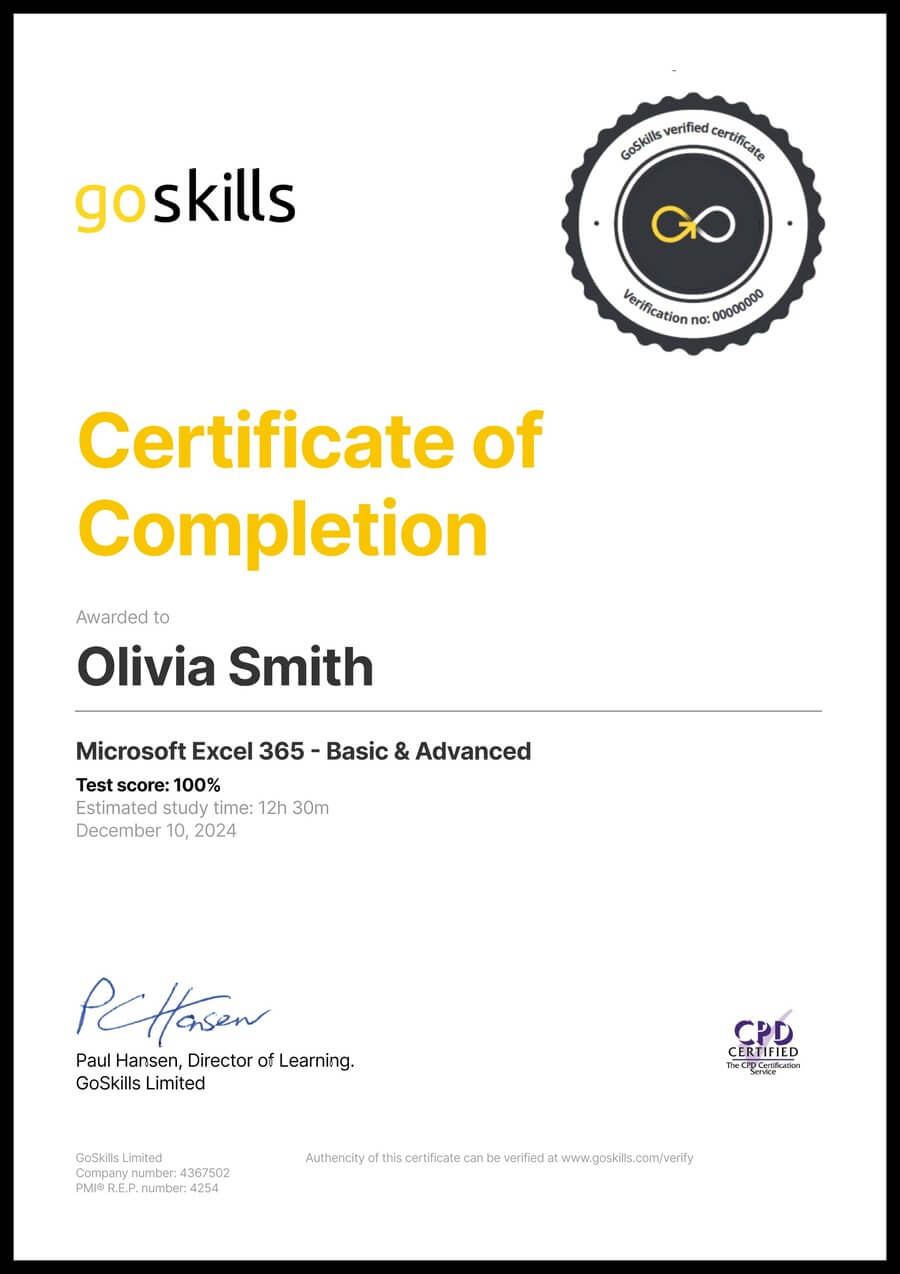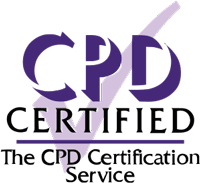Microsoft Word 365 - Basic & Advanced
Microsoft Word 365 - Basic & Advanced
Skills you’ll gain
Discover all there is to know about Microsoft Word 365 through a series of engaging lessons. This online course has something for everyone, covering beginner, intermediate, and advanced lessons in Word.
By the end of this course, you will be able to:
- Create, save, and share documents.
- Apply pre-designed Styles and format text with fonts and colors.
- Work with bullets, indents, and line spacing.
- Insert pictures and screenshots.
- Set up page layout for margins, columns, and printing.
- Create and update an automated Table of Contents.
- Mail merge to envelopes, labels, emails, and form letters.
- Add comments, track changes, and compare documents.
Whether you use Word for work, study, or leisure, these lessons will help you transform that blank page into a professional-looking document! Once enrolled, our friendly support team and tutors are here to help with any course-related inquiries. Want to be a more efficient Word user? Start learning 99 of the best Word shortcuts for PC and Mac.
Depending on your existing skills, you may also be interested in our Word Basic course or our Word Advanced course.
Syllabus
Download syllabus-
1
Styles Gallery Learn how and why to apply predesigned Styles to text. 3m
-
2
Format Text with Fonts and Colors Learn how to apply bold, italic, underline and Drop Caps styles to text. 4m
-
3
Format Painter Quickly copy and paste “formats” with this amazing button. 3m
-
4
Practice with the FONT Group Learn to apply various font styles and why they are used in professional documents. 4m
-
5
Basic Paragraph Formats Paragraph format and alignment are important for proper document layout. 3m
-
6
Fun and Functional Paragraph Formats Apply background colors or borders to paragraphs. 3m
-
7
Bullets and Numbering Learn how to apply and control bullets and numbering. 3m
-
8
Indents Learn how and when to use specific indent types. 4m
-
9
Line Spacing Learn why you would want more space between the lines within paragraphs and how to apply the space. 3m
-
10
The Find/Replace Function Learn to quickly find a word or format and replace it with an alternative. 3m
-
1
File, New Explore the readily available document templates rather than creating a particular document from scratch. 3m
-
2
File, Recent Learn to quickly preserve files and easily access your most used documents. 3m
-
3
File, Share View the various ways to collaborate with others on a document. 3m
-
4
File, Info and Security Considerations Password Protect a file or Recover an unsaved version. 4m
-
1
Document Views Learn how and why to use the different available document views. 3m
-
2
Navigation Pane Learn how the Navigation Pane assists with document management. 3m
-
3
Show and Zoom Controls How to add the Navigation pane and quickly zoom in and out of the document. 4m
-
4
Use Multiple Windows Learn about using multiple windows to view the same or various documents side-by-side. 4m
-
1
Inserting Page Breaks and Blank Pages Quickly force a new page at the location you specify and/or add a blank page as well. 3m
-
2
Add a Cover Page Pre-designed cover pages add a professional look to your report. 3m
-
3
Creating Tables Tables provide a structure of columns and rows to help the user line up data, similar to a spreadsheet layout, but within a Word document. 5m
-
4
Inserting Pictures and Clip Art Learn how to apply and control picture sizes and placement. 3m
-
5
Online Pics and 3D Models How to find Online Pictures and add 3D Models as well as animated pictures. 3m
-
6
Basic Use of Shapes Learn to move and color shapes to draw attention to an area. 4m
-
7
Screenshots Learn how to capture a picture of your screen, modify it, and use it in a document. 4m
-
8
Headers and Footers Learn how to add Headers and Footers to a document. 4m
-
9
Page Numbers and File Location Notes Learn how to apply and control page numbers and insert file notes. 3m
-
10
Word Art Learn this creative text format often found on flyers, and a clever “rubber stamp” to use on documents. 4m
-
11
Symbols Symbols are a necessary and interesting toolset if using creative accents, foreign characters, or displaying mathematical formulas. 3m
-
1
Margins Learn how to set margins to standard or custom settings. 3m
-
2
Paper Orientation and Size Learn how to change paper size and orientation depending on the document type. 3m
-
3
Using Columns Learn to divide text into long columns to make the best use of available space. 3m
-
4
Paragraph Spacing Learn how to control spaces between paragraphs all at one time and adjust spacing as needed. 3m
-
5
Printing Explore the various options within the Print dialogue box. 3m
-
1
Table of Contents Learn to create an automated Table of Contents. 5m
-
2
Update the Table of Contents Learn how to update the Table of Contents when changes are made to a document. 3m
-
3
Mark Entry for Table of Contents Learn to create an advanced-level Table of Contents using “Mark Entry”. 5m
-
4
Footnotes Learn to place footnotes and endnotes which link to the document text. 4m
-
5
Citations and Bibliography Learn to cite your sources for a college paper or report. 4m
-
6
Using Captions Learn to create and link captions to images and text. 4m
-
7
Create an Index Create an Index organized by topic or keyword. 5m
-
1
Create and Apply a Style Learn to format text and save the style inside the Style Gallery for future use. 3m
-
2
Rename, Modify, and Remove Styles After mastering styles, keep the Style Gallery tidy by editing or removing styles. 5m
-
3
Reveal Formatting Learn to use the Reveal Formatting pane to look beyond surface formatting. 4m
-
4
Selection Tool and Format Pane Learn to use this tool when working with graphics and styles. 5m
-
1
Envelopes and Labels Learn how to quickly produce a printed envelope or label for postal mail. 4m
-
2
Mail Merge to Labels Auto-populate a sheet of labels with text pulled from a list. 6m
-
3
Mail Merge to Envelopes Merge mailing lists to print directly onto envelopes. 4m
-
4
Mail Merge to Form Letters Auto-populate a form letter with various fields pulled from a list. 5m
-
5
Mail Merge to Emails Merge Outlook Contact lists into emails so each recipient gets a personal email. 4m
-
6
Mail Merge Tips from Experience Learn tips for label margins and ensure your labels print perfectly. 2m
-
1
Proofing Learn how to spellcheck, find a better word, or count the total words in a document. 4m
-
2
Language and Translation Translate an existing document or set the Word program to use a different language. 3m
-
3
Comments Learn to place notes in the margins of a document and control those notes. 3m
-
4
Track Changes Track changes will show which person made which changes in a document. 5m
-
5
Compare Documents Comparing documents takes two versions of a document and compares for changes. 4m
Certificate
Certificate of Completion
Awarded upon successful completion of the course.

Instructor
Andy Lanning
Andy has 20 years of experience in the computer industry and has been training individuals and groups since 1996. As a self professed computer 'nerd', Andy believes in using computer programs like Word to maximize efficiency and solve common workflow issues.
Andy is a Certified Microsoft Office Specialist. She is proficient in Microsoft programs including Word, Excel, Outlook, PowerPoint, and Publisher.

Andy Lanning
Certified MS Office Specialist
Accreditations
Link to awardsHow GoSkills helped Chris
I got the promotion largely because of the skills I could develop, thanks to the GoSkills courses I took. I set aside at least 30 minutes daily to invest in myself and my professional growth. Seeing how much this has helped me become a more efficient employee is a big motivation.


